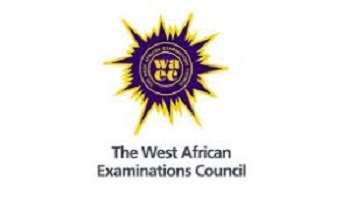Biology Practical Waec Answers 2024
(1a)
Phylum: Chordata
Class: Aves
(1b)
(PICK ANY THREE)
(i) It is dark red in color with greenish gall bladder
(ii) It has smooth firm texture
(iii) It has an irregular shape
(iv) It is large and lobed, with the attached gall bladder small and enlogated
(1ci)
(PICK ANY THREE)
(i) It helps in metabolizing nutrients and detoxifying harmful substances.
(ii) It stores essential nutrients such as vitamins and minerals.
(iii) It regulate blood sugar levels and cholesterol levels.
(iv) It stores and releases bile
(iv) It helps domestic fowls in digestion fatty food
(1cii)
Specimen D:
(PICK ANY ONE)
-It helps grind food particles before digestion.
-It responds to changes in the coarseness of the diet
-It helps in regulating feed flow
Specimen E:
(PICK ANY ONE)
-The intestine absorbs nutrients from digested food.
-It aids in complete digestion of proteins
-It eliminates waste products
(1ciii)
Specimen D:
-Possession of tough lining made of keratin to aid gringing food effectively
Specimen E: Possession of finger-like projection called villi to increase surface area for better nutrient absorption
(1di)
TABULATE
-Under observation:
(i) Red litmus turn blue
(ii) No effect on blue litmus
-Under inference:
(i) Alkaline
(ii) Basic
(1dii)
(PICK ANY THREE)
(i) It helps in emulsification of fats
(ii) It aids in the absorption of fat-soluble vitamins
(iii) It aids in neutralization of Stomach Acid
(iv) It helps in the excretion of waste products from the liver, including bilirubin and excess cholesterol
(iv) It aids in digestion
(1ei)
Digestive system
(1eii)
Specimen D
(1fi)
Heterotrophic
(1fii)
(PICK ANY ONE)
-Maize
-Fruits
-Soybean
(2a)
(i)for propagation
(ii)serve as storage organ
(iii)For photosynthesis
(iv)For gaseous exchange
(2bi)
Spec F; for propagation
Spec K; serve as storage organ
(2bii)
Spec F; it is reproductive in nature
Spec K; due to the nature of it surface
(2biii)
Spec F; root
Spec K; stem
(2c)
TABULATE
Under: Spec F;
(i)small size
(ii)Presence of nodes
(iii) terminal bod id present
(iv) Absence of adventurous root
Under: Spec K;
(i)big size
(ii)Absence of node
(iii)terminal bod is absent
(iv)presence of adventurous root
(2cii)
Grey colour
(3a
L-chest (middle portion of there)
Q-Lower back repion of the Spine
(3bi)
TABULATE
(PICK ANY FOUR)
L || Q
UNDER L
(i) Smaller and have a heart-shaped body
UNDER Q
(i) Larger and have a kidney -Shaped body
UNDER L
(ii) occur after the Cervical vertebra
UNDER Q
(ii) occur below the thoraic vertebrae
UNDER L
(iii) Tranverse processes are fairly large
UNDER Q
(iii) Tranverse processes are lage and blunt
UNDER L
(iv) Curve in the posterior direction
UNDER Q
(iv) Curve in the ananterior direction
UNDER L
(v) intervertebral disk is thin
UNDER Q
(v) intervertebral disk is massive
(3bii)
(i) Both have a Single Spinous process projecting Posteriorly.
(ii) Both have Superior and inferior articular.
(iii) Both posseses a pair tranverse processes.
(iv) Both have a vertebral arch.
(v) Both have vertebral body.
(3ci)
M
(i) Scapula
(ii) Ulna and radius
P
(i) Pelius
(ii) Tibia
(iii) Patella
(3cii)
For L
*Before*
Cervical vertebrae
*After*
Lumbar vertebrae
For Q
*Before*
Thoraic vertebrae
*After*
Sacral vertebrae.!!

